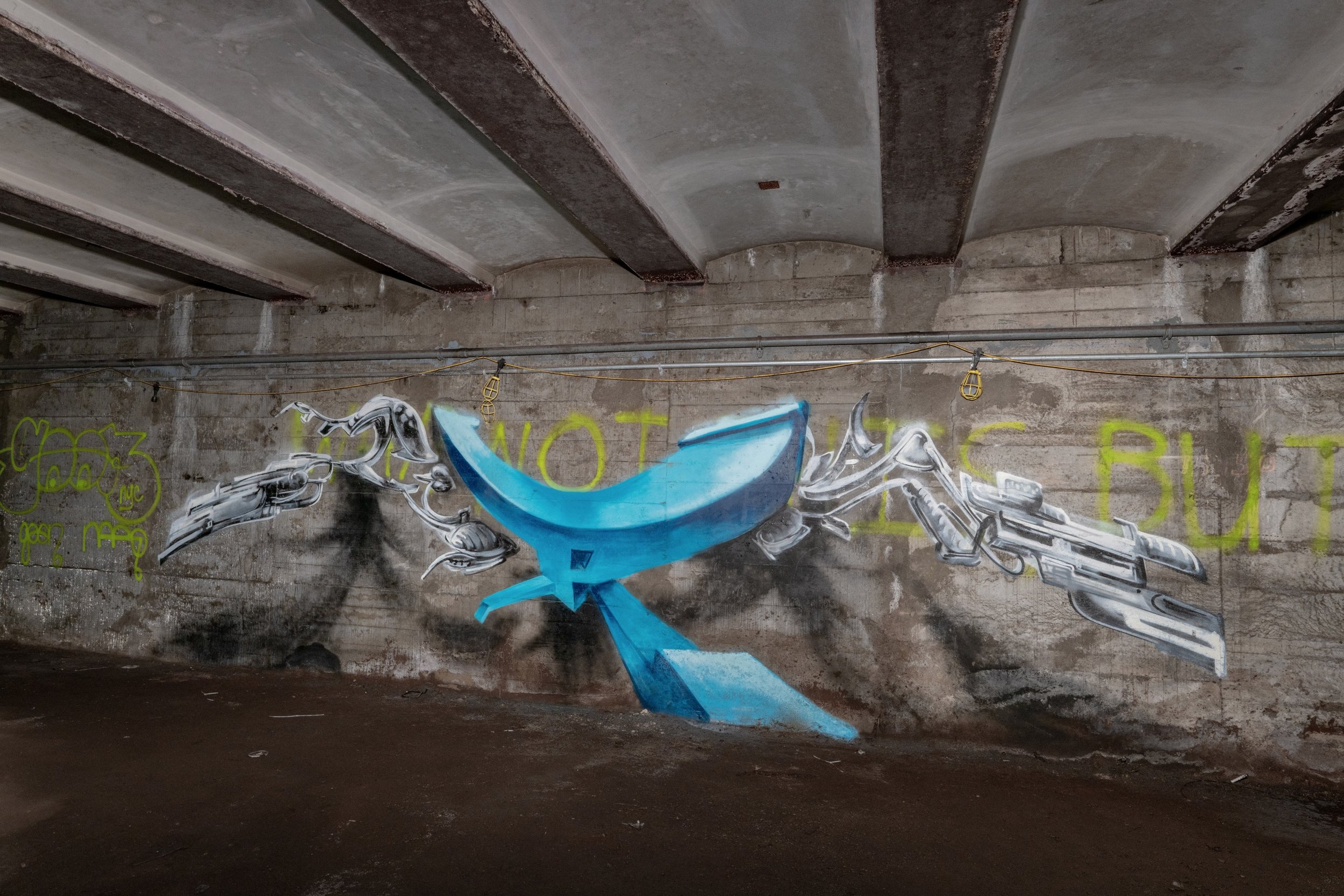Continuing down what would have been the IND Worth St Line, one crosses the East Broadway (F) station. East Broadway would have run nearly directly perpendicular to the Second System line heading toward Brooklyn. As such, East Broadway was originally planned to serve as a convenient transfer point and a station twice its current size. One may notice while walking through the station that there are numerous dark and dirty staircases locked behind gates, and many locked doors in the public mezzanine. This is because the public station is but a husk of what was constructed.
The station was actually built with a full length intermediate level mezzanine which is also a provision for a station for the Worth St line. Tracks and a platform would have extended West-East in the middle of this intermediate level, perpendicular to the active station. As stated in the previous post, the line would have been highly beneficial to Brooklyn commuters, bringing full subway service to “transportation deserts” and also taking pressure off of elevated lines and more unreliable two track lines such as the (L). From this station, trains would have continued through a new crossriver tunnel into Williamsburg, into the S 4th St hub.
Below the provision, the East Broadway station is heavily deteriorating and will probably be due for a Station Renovation or Enhanced Station Initiative soon. Like other (F) line stations, especially on the Lower East Side, the station is regularly inhabited by the homeless and overwhelmingly reeks of urine in many areas.
The provision itself is rather dark and dirty, covered in “brown snow”. A portion is tiled like any plain IND mezzanine would be. The space is now used for storage and break rooms by Stations personnel. While this area will probably never see revenue service or customers, it is certainly cool to look at, especially being rarely photographed.




































